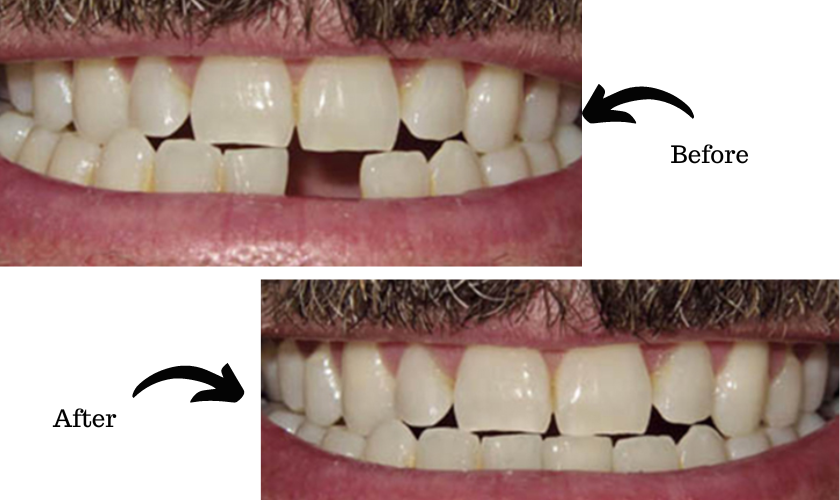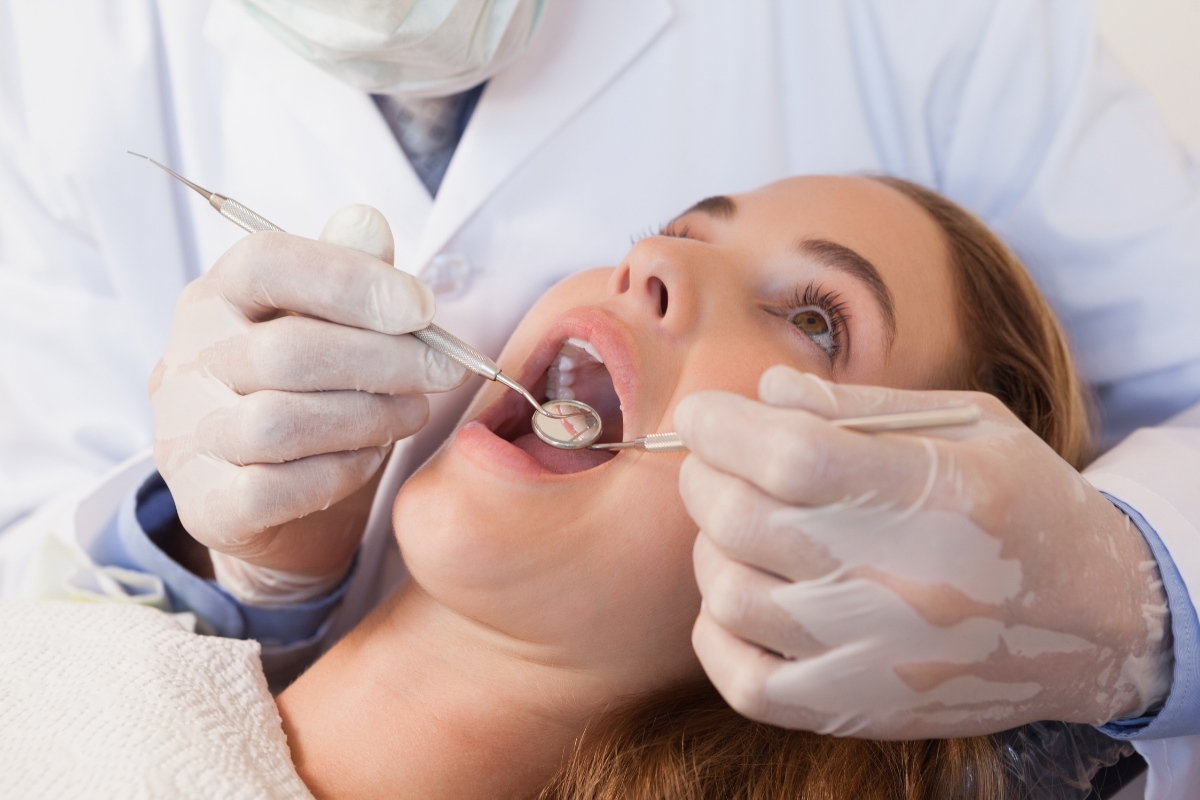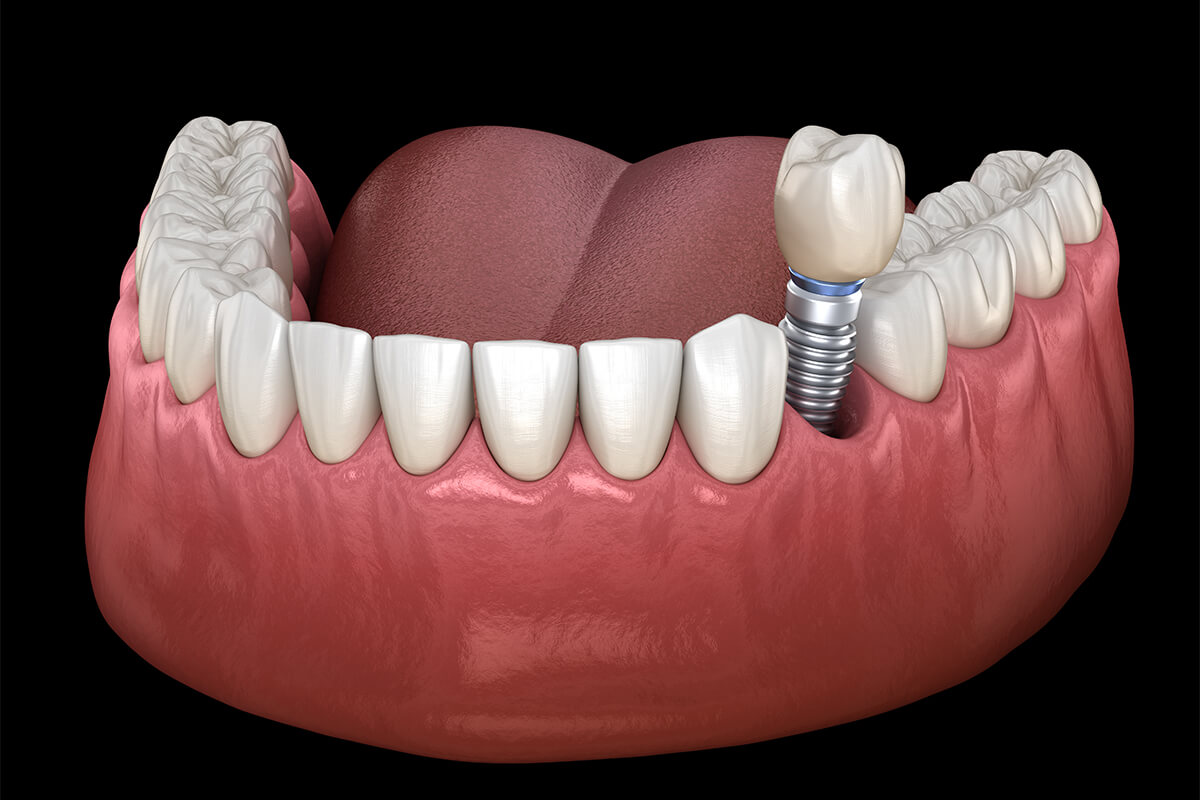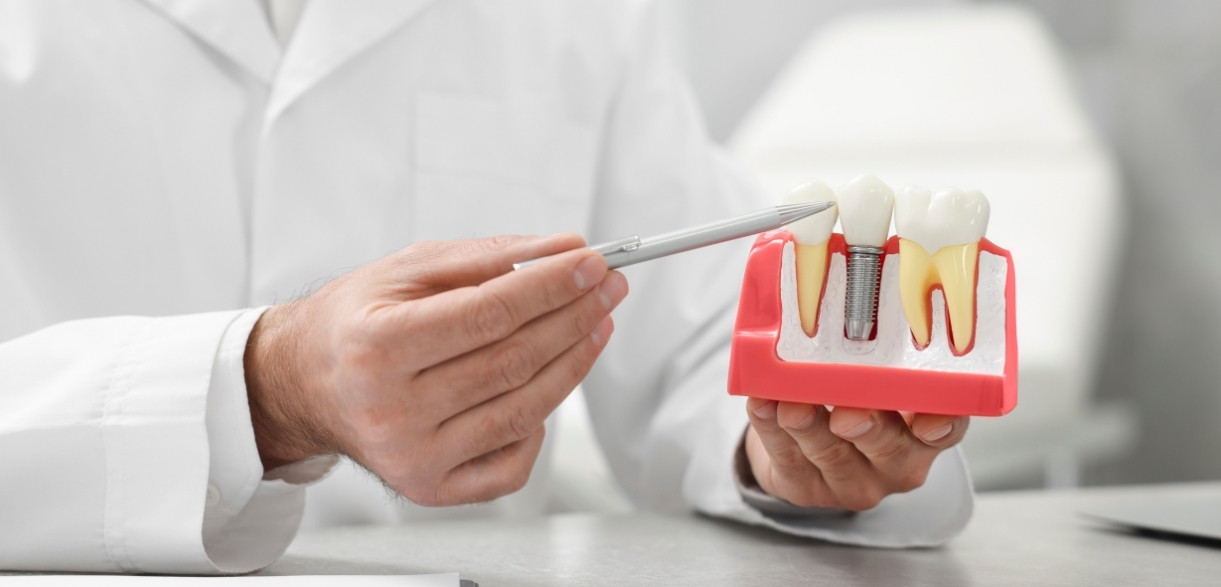Pay Online
The Latest Advances in Dental Implant Technology: What’s New?

Dental implants have revolutionized how we replace missing teeth. These tiny titanium posts act as artificial tooth roots, providing a stable foundation for crowns, bridges, or dentures. But the world of dental implants is constantly evolving, offering exciting new possibilities for patients seeking a natural-looking and functional smile.
This blog post delves into the latest advancements in dental implant technology, exploring how these innovations are improving the implant experience. From enhanced osseointegration to same-day implant placement and the rise of smart implants, we’ll unveil the exciting frontiers of dental implant dentistry.
Why Choose Dental Implants?
Dental implants offer a multitude of benefits over traditional bridges and dentures:
- Durability and Stability: Implants fuse with the jawbone, creating a rock-solid foundation that prevents bone loss and shifting teeth.
- Natural Appearance: Implants support crowns that mimic the look and feel of natural teeth.
- Improved Speech and Chewing: Implants restore natural bite function, allowing for clear speech and comfortable chewing.
- Enhanced Confidence: A complete smile boosts confidence and overall well-being.
While dental implants in Greeley have long been a successful treatment option, recent advancements have further enhanced their efficacy and appeal. Let’s explore some of the most exciting breakthroughs.
1. Precision Takes Center Stage: 3D Imaging and Planning
Gone are the days of relying solely on X-rays for implant placement. Today, 3D imaging technologies like cone beam CT scans provide a detailed, three-dimensional view of the jawbone, allowing dentists to meticulously plan implant placement. This ensures optimal positioning, minimizing the risk of nerve damage and maximizing implant success.
Benefits of 3D Imaging:
- Improved Accuracy: 3D scans reveal vital anatomical structures, enabling precise implant placement for optimal function and aesthetics.
- Reduced Surgical Risks: Precise planning minimizes the risk of nerve damage or injury to surrounding structures.
- Enhanced Patient Experience: 3D visualization allows dentists to discuss the implant procedure with patients in detail, fostering better understanding and informed decisions.
2. Faster Healing and Immediate Loading with Advanced Surface Treatments
The success of a implant relies on osseointegration, the process where the implant fuses with the jawbone. Traditionally, this healing process could take several months, requiring patients to wear temporary restorations. However, advancements in implant surface technology are accelerating osseointegration.
- Nano-textured Surfaces: These microscopic surface features promote faster and stronger bone attachment, leading to quicker healing times and potentially allowing for immediate loading of implants with crowns in certain cases.
- Hydrophilic Surfaces: These attract water, promoting blood clot formation and earlier bone integration.
These advancements translate to faster healing times and potentially shorter treatment durations.
3. Same-Day Smile Makeovers: A Boon for Busy Patients
Traditionally, implant placement involved a multi-stage process with months of healing in between. However, advancements in implant technology and surgical techniques have opened doors for same-day implant placement with immediate loading in certain situations.
This approach involves placing the implant and attaching a temporary or permanent crown in a single visit. While not suitable for all patients, it offers a significant advantage for those seeking a quicker path to a complete smile.
Factors Influencing Same-Day Implant Placement:

Same-day implants offer a quicker and potentially more convenient option for replacing missing teeth. However, several factors influence whether you’re a good candidate for this procedure. Here’s a detailed breakdown of these key considerations:
1. Jawbone Health:
- Bone Density: This is the most critical factor. Same-day implants require sufficient bone volume and density to achieve immediate stability, also known as primary stability. Without a strong foundation, the implant may not integrate properly with the jawbone, leading to potential failure.
- Bone Quality: Beyond density, the quality of the jawbone also plays a role. Healthy bone with good blood flow is ideal for optimal healing and osseointegration, the process where the implant fuses with the bone.
2. Type of Implant:
- Surface Design: Certain implant designs promote faster osseointegration. These may have a roughened or textured surface that encourages bone cells to attach and grow onto the implant.
- Implant Diameter and Length: Wider and longer implants tend to offer greater initial stability, making them more suitable for immediate loading. However, the dentist will consider the specific anatomy of your jawbone to determine the optimal size.
3. Patient Factors:
- Overall Health: Underlying medical conditions, such as uncontrolled diabetes or autoimmune diseases, can impact healing and increase the risk of infection.
- Smoking: Smoking habits significantly hinder healing and increase the risk of implant failure. Dentists typically recommend quitting smoking well in advance of the procedure.
- Oral Hygiene: Maintaining good oral hygiene is essential for successful implant placement and long-term health. Patients with a history of gum disease may require additional treatment to ensure a healthy environment for the implant.
4. Reason for Tooth Loss:
- Recent Extraction: Fresh extraction sockets sometimes offer ideal conditions for immediate implant placement. However, the dentist will need to assess the health of the surrounding bone and socket for suitability.
- Trauma: In cases of tooth loss due to trauma, the jawbone might be damaged or weakened. This may necessitate bone grafting procedures before same-day implant placement becomes an option.
Remember: Discussing same-day implant placement with your dentist Greeley is crucial. They will conduct a thorough examination, including X-rays or CT scans, to assess your jawbone health, suitability for immediate loading, and any potential risk factors. This personalized consultation will help you determine if same-day implants are the right option for a successful and lasting smile.
4. Robotics Revolutionizes Implant Surgery: Enhanced Precision and Minimally Invasive Techniques
The field of dentistry is embracing robotics, and implant surgery is no exception. Robotic-assisted surgery utilizes computer guidance and robotic arms to place implants with unparalleled precision. This translates to:
- Minimally Invasive Procedures: Smaller incisions can be made, leading to faster healing and reduced discomfort.
- Reduced Risk of Complications: Robotic precision minimizes the risk of human error and nerve damage.
- Improved Long-Term Outcomes: Precise placement enhances implant stability and longevity.
While robotic-assisted surgery is still evolving, it represents a promising frontier for the future of implant dentistry.
5. Smart Implants: Ushering in a New Era of Monitoring and Care
Imagine implants that communicate with your dentist! The concept of “smart implants” is no longer science fiction. These innovative implants are embedded with tiny sensors that can gather data on factors like bite force, temperature, and pressure around the implant.
The field of dental implant technology is rapidly evolving, offering patients more reliable, comfortable, and long-lasting solutions for tooth replacement. From innovative materials like zirconia to advanced techniques like guided implant surgery, the latest advances are revolutionizing the way we approach dental implants. With these new technologies, patients can enjoy restored confidence in their smiles and improved quality of life. As research and development continue, we can expect even more exciting advancements in the future, further enhancing the effectiveness and accessibility of implant treatment.





